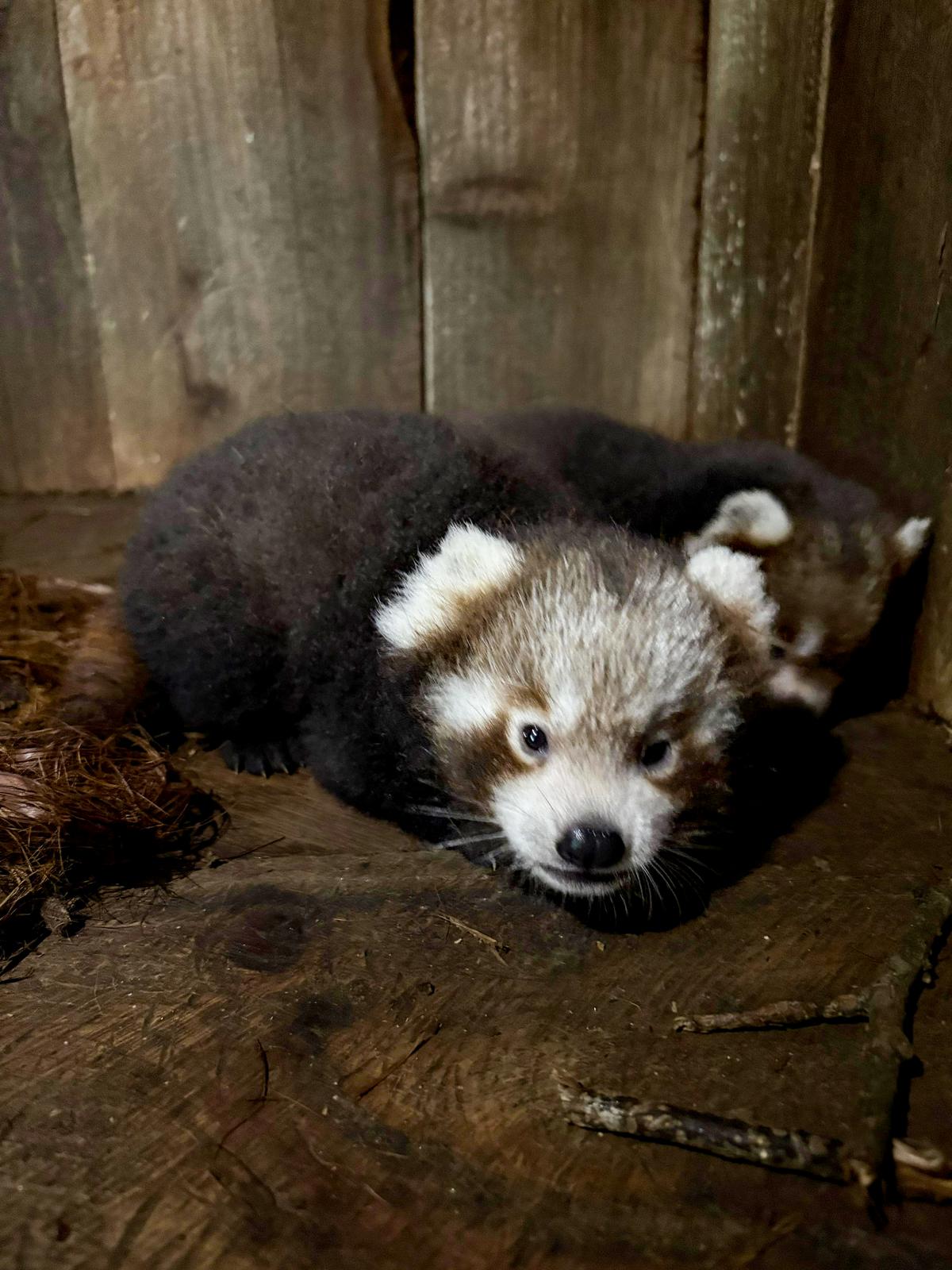Science
Red Panda Cubs Born in Sikkim Zoo Revive Conservation Efforts

The Himalayan Zoological Park in Sikkim has celebrated the birth of two red panda cubs after a gap of seven years, marking a significant milestone for the conservation programme. The cubs were born to parents Lucky-II and Mirak on June 15, 2025, with park authorities announcing the news on August 1, 2025. This successful birth is particularly crucial given the challenges faced by the park’s red panda population in recent years.
According to the park’s Director, Sangay Gyatso, this event is a beacon of hope, coming after a difficult period that included two outbreaks of canine distemper, a viral disease that severely impacted the captive red panda population. “This birth is especially heartening as it comes after a challenging seven-year period in the history of the Red Panda Conservation Programme, initiated in 1997,” Gyatso stated.
Conservation Programme History
The breeding programme at the Himalayan Zoological Park began with a female red panda named Preeti, who was brought from Rotterdam Zoo in the Netherlands, and Jugal from Padmaja Naidu Himalayan Zoological Park in Darjeeling. Their successful breeding established a foundation for a thriving genetic lineage. In 2005, the programme was bolstered by the introduction of a wild-origin pair, Lucky and Ram, which helped to expand and diversify the genetic pool.
All red pandas born under this initiative are carefully monitored through national and international studbooks. This ensures healthy genetic variability and promotes global cooperation in breeding efforts. The authorities emphasize the importance of tracking the genetic health of these endangered animals, which is vital for their long-term survival.
Unique Parental Behavior
Typically, red pandas breed during the winter months between November and January. After a gestation period of about five months, females give birth between June and August. Interestingly, park officials observed Mirak taking part in nest-building activities alongside Lucky-II, a rare occurrence as male red pandas usually do not engage in cub-rearing.
The cubs will remain away from public view for the time being, with plans for their introduction to visitors once they are older. “These new cubs will stay with their mother for over a year, reaching full size by 12 months and becoming sexually mature by 18 months. Their health and compatibility will then be assessed as part of future breeding strategies,” Gyatso added.
The Himalayan Zoological Park, located at Bulbuley just 3 kilometers from Gangtok, spans an area of 205 hectares and sits at an average elevation of 1,780 metres. In addition to red pandas, the park is home to various species, including the snow leopard, Himalayan palm civet, monal pheasant, Himalayan black bear, and the crimson-horned pheasant.
As the red panda cubs grow, their birth signifies a renewed commitment to conservation efforts in Sikkim and highlights the resilience of the programme and its dedicated team.
-

 World4 months ago
World4 months agoSBI Announces QIP Floor Price at ₹811.05 Per Share
-

 Lifestyle4 months ago
Lifestyle4 months agoCept Unveils ₹3.1 Crore Urban Mobility Plan for Sustainable Growth
-

 Science4 months ago
Science4 months agoNew Blood Group Discovered in South Indian Woman at Rotary Centre
-

 World4 months ago
World4 months agoTorrential Rains Cause Flash Flooding in New York and New Jersey
-

 Sports4 months ago
Sports4 months agoBroad Advocates for Bowling Change Ahead of Final Test Against India
-

 Top Stories4 months ago
Top Stories4 months agoKonkani Cultural Organisation to Host Pearl Jubilee in Abu Dhabi
-

 Science4 months ago
Science4 months agoNothing Headphone 1 Review: A Bold Contender in Audio Design
-

 Top Stories4 months ago
Top Stories4 months agoAir India Crash Investigation Highlights Boeing Fuel Switch Concerns
-

 Sports4 months ago
Sports4 months agoCristian Totti Retires at 19: Pressure of Fame Takes Toll
-

 Business4 months ago
Business4 months agoIndian Stock Market Rebounds: Sensex and Nifty Rise After Four-Day Decline
-

 Politics4 months ago
Politics4 months agoAbandoned Doberman Finds New Home After Journey to Prague
-

 Top Stories4 months ago
Top Stories4 months agoPatna Bank Manager Abhishek Varun Found Dead in Well









